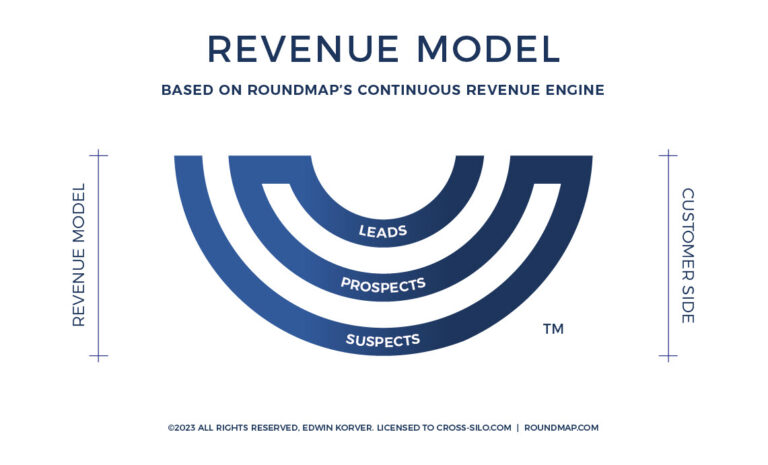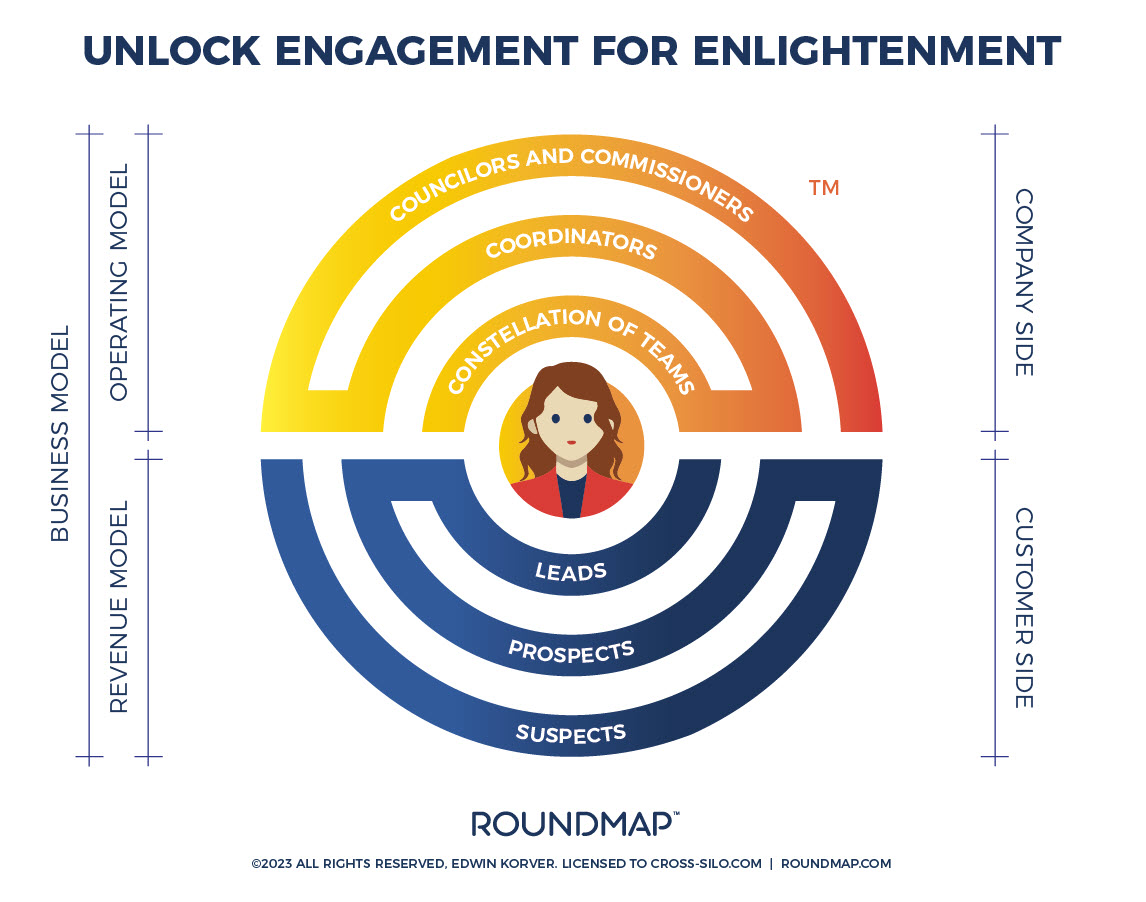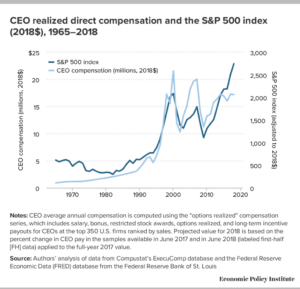Following the article ‘Healing Broken Systems,’ we propose a consent-driven, distributive leadership model. We were inspired by Richardo Semler (Semco Style), Gerard Endenburg (Sociocracy), Robert Greenleaf (Servant Leadership), Bill Drayton (Constellation of Teams), and David Cooperrider (Appreciative Inquiry), among others.
Given that an arch is structurally the strongest geometric shape because of how forces are distributed evenly, we named it the ARC™ model. The letters ‘ARC’ stand for Alignment, Representation, and Consent.
Why Change the Operating Model?
First, why must we depart from the traditional hierarchical command and control structure?
- Removing Barriers: After reading the accounts of Gillian Tett, Heidi Gardner, Vikram Mansharamani, and Douglas Giles, we realized the graveness of the adverse effects of siloization (the vertical divide) on human systems. We don’t imply ending the tribal behavior common to human nature but lowering the barriers between human systems.
- Delayering: Richardo Semler‘s book Maverick impacted our thinking about organizational dynamics. In 1990, Richardo questioned the Great Man theory of leadership. Organizations that followed his lead removed needless layers of management (the horizontal divide) and championed self-organizing teams.
- Close to The Ball: Jacques Monod argued, “Chance alone is at the source of every innovation.” To increase the odds for an invention to journey into innovation, it is imperative to have a clear understanding of market demand, technological feasibility, available funding, competition, and so on. Hence, teams must play close to the ball (i.e., the market).
- Adapt Fast: General McChrystal made a strong case for departing the traditional command-and-control style when facing Al Qaida in Iraq. The Allied Forces were losing the battle against an unpredictable adversary. Their tendency towards micromanagement kept them one step behind the facts. The solution was to build a constellation of teams.
- Growing Divide: Since the 1973 Oil Crisis, productivity increased by 241.8% while worker compensation stagnated. From the entire staff, CEOs take by far the largest chunk. Between 1973 and 2021, the bottom 90% saw their income ‘grow’ by 29% (before inflation) while CEO compensation ballooned by 512% (source: Economic Policy Institute).
The ARC™ Operating Model
Instead of a strict top-down hierarchy, an ARC-type organization emphasizes decentralized decision-making and strong employee empowerment. It consists of concentric half-circles representing 3-4 levels of responsibility, authority, and decision-making within the organization. Taken from the inside out:
- Constellation of Teams: Dynamic constellations of small event-driven groups of employees, working in circles of 8-12 people to create and deliver customer value. They are empowered to make decisions and have high autonomy in their tasks. It stretches left to right as it represents the critical front-line interface.
- Coordinators: Moving outward, there may be coordinators or team leaders who support and facilitate the employees’ work within their circle. These coordinators act as connectors and facilitators, providing employees with guidance, resources, and support.
- Commissioners: In a larger organization, these would be the people responsible for a business unit.
- Councilors: Further out, some managers or executives oversee the work of multiple commissioners, coordinators, and teams. They provide strategic direction, assign resources, and align the organization’s objectives.
Ending the Great Man Theory: The ARC™ operating model has no one at the top. Like roundtable settings, where no head is at the table, the key to the ARC™ operating model is to distribute power and authority.
Variations in scope: The decisions made at the level of the constellations of teams are limited to the project, product, or customer subject to the team, while the decisions made at the level of the councilors span the entire organization.
The arc shape suggests that power and decision-making are distributed evenly throughout the organization rather than concentrated and concealed at the top. It symbolizes a more collaborative and participatory approach to leadership.

Characteristics of an ARC-type Organization
Several characteristics can be observed in an organization that fosters increased creativity, curiosity, collaboration, and commitment. These characteristics create a work environment that encourages innovation, exploration, teamwork, and a supportive culture. Here are some key characteristics:
- Open Communication: A circular organization promotes open and transparent communication channels. Employees are encouraged to express their ideas, thoughts, and concerns freely. This open communication fosters creativity by enabling the exchange of diverse perspectives, encouraging constructive feedback, and allowing for the exploration of new concepts.
- Empowerment and Autonomy: In an ARC-type organization, individuals are empowered and given autonomy to make decisions and take ownership of their work. This autonomy encourages curiosity and creativity as employees can experiment, take risks, and explore new ideas without excessive micromanagement.
- Collaboration and Interdisciplinary Approach: The ARC™ structure promotes collaboration and interdisciplinary work. It encourages teams to work across functional boundaries and leverage employees’ diverse skills and knowledge. Collaboration nurtures creativity by fostering the cross-pollination of ideas, encouraging brainstorming sessions, and facilitating the combination of different perspectives to solve problems.
- Continuous Learning and Development: An ARC-type organization values constant learning and development. It provides opportunities for employees to enhance their skills, acquire new knowledge, and explore their interests. This emphasis on growth and learning nurtures curiosity and encourages employees to seek innovative solutions and approaches.
- Supportive Environment: An ARC-type organization promotes a supportive and caring culture. Leaders and colleagues are empathetic, respectful, and attentive to each other’s well-being. This supportive environment creates psychological safety, allowing individuals to take risks, share ideas openly, and collaborate effectively.
- Flexibility and Adaptability: ARC-type organizations are flexible and adaptable to changing circumstances. This flexibility enables employees to respond creatively to new challenges and opportunities. It encourages experimentation, adjustment, and iteration, fostering an environment of continuous improvement and innovation.
- Recognition and Appreciation: In an ARC-type organization, recognition and appreciation for contributions are valued and practiced. Employees’ efforts, creativity, and collaboration are acknowledged and celebrated. This recognition motivates individuals, boosts morale, and encourages a culture of care and support.
- Chain of Consent™: To ensure alignment throughout the organization, consent is based on double representation: each team has a representative at the coordinators’ roundtable, and vice versa. Likewise, the coordinators have a representative at the commissioners’ roundtable, and vice versa. This two-way representation guarantees that decisions remain aligned with the company’s goals and that priorities are set correctly.
This operating model will increase employee engagement, customer loyalty, and meaningful innovation and create a positive work culture. We’re hopeful this works, provided employees can obtain goal clarity and receive ample guidance and coaching. Let’s dive a bit deeper into the consent-driven aspect.
Chain of Consent™
Inspired by Sociocracy, we are proposing a consent-driven decision-making process. The principle of consent refers to seeking consent from individuals within a defined decision-making circle. Its main principle implies that decisions are made when there are no reasoned objections from those affected by the decision. As mentioned before, it is essential to have a two-way representation on all levels, which is the key to the Chain of Consent™, to ensure alignment and goal clarity.
Consequently, the ARC™ operating model acts as a governance model and a decision-making approach that aims to distribute power and decision-making authority throughout an organization. In practice, consent works as follows:
- Proposal: A proposal is presented by an individual or a subgroup within the decision-making circle. The proposal should be clear, specific and address the issue at hand.
- Clarifying Questions: The proposal is then open to clarifying questions from the members of the decision-making circle. The purpose is to ensure a shared understanding of the proposal.
- Objections: Members can raise reasoned objections if they believe the proposal negatively impacts the organization or its members. Objections must be based on specific concerns about the proposal’s implementation or alignment with the organization’s values and aims.
- Modification or Integration: If objections are raised, the proposal is modified or integrated with the objections to address the concerns and find a solution that everyone can consent to. This iterative process seeks a proposal that respects the objections while moving the organization forward.
- Consent: Once all objections have been addressed or integrated into the proposal, consent is sought from all members of the decision-making circle. Consent does not require complete agreement or consensus but rather the absence of reasoned objections. If no objections are raised, consent is given, and the proposal becomes a decision the organization can act upon.
The Chain of Consent™ principle ensures that decisions are made collaboratively, with input and checks from relevant stakeholders. It values transparency, active participation, and addressing concerns to find solutions acceptable to everyone involved. This approach fosters a sense of ownership, engagement, and trust within the organization while promoting effective and efficient decision-making processes.
Complementary Revenue Model
While the image above illustrates our proposed operating model, there is a complementary image to paint. This relates to the revenue model. So, while the ARC™ focuses on how best to organize with the customer in mind, raising the resilience of teams, and increasing the creative and innovative capacity, its ‘reflection’ mirrors in the blue part of the image: the different stages of customer development: suspects, prospects, leads, and customers.
Similar to how information flows through the ARC™ operating model, shared customer experiences can contribute to or impair the attractiveness of the firm’s proposition. In fact, both models are consent-driven: if there are no objections from actual customers, it is generally safe to buy. If there are, doubt kicks in, which leads people to look for alternatives.

Coming Full Circle
When we join the two halves, the operating and revenue model, we essentially get the business model. Aligned with modern-day beliefs in the Digital Age, the customer should be set centerstage of the entire operation:

Beware: Every action needs to serve your customer’s needs. If you fail, negative experiences will affect new leads, prospects, and suspects. If you succeed, your brand will attract those positively affected by your existing customers.
Featured Image: Arc the Triomphe
The Arc de Triomphe, located in Paris, is shaped like an arc due to its symbolic and aesthetic significance. The arc shape, specifically an arch, has been used throughout history as a structural element in architecture due to its strength and stability. However, the choice to design the Arc de Triomphe specifically as a triumphal arch holds additional meanings. The arc shape is associated with victory and triumph, which aligns with the purpose and symbolism of the monument. The Arc de Triomphe was commissioned by Napoleon Bonaparte in 1806 to honor the French army and commemorate their victories. The arc shape symbolizes the triumphs and achievements of the French military, representing the strength and resilience of the nation. Moreover, the arc shape of the monument creates a grand and imposing structure that draws attention and evokes a sense of grandeur. It serves as a visual focal point and a symbol of national pride. The design choice to incorporate an arc also allows for a large central opening through which important processions and parades can pass, further emphasizing the idea of celebration and victory. Symbolically, the ARC™ Model is a statement that the company is strong and resilient and prides itself on providing safe passage to all of its customers, respecting their interests and that of its people.



